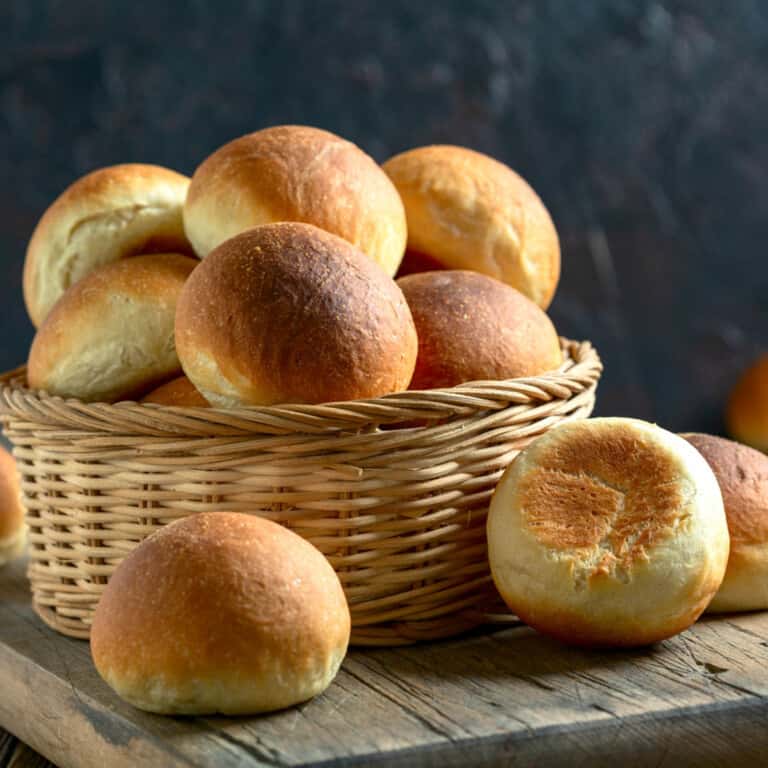I’m often asked about how to approach food with preteens and teens. Teenagers developmentally need more freedom and independence and being too rigid in feeding can lead to a teen feeling restricted.
Restrictive feeding has been shown to interfere with a child being able to use hunger and fullness cues to guide their eating.

On the other hand, our current food culture doesn’t always support teens listening to hunger and fullness. As a parent, sometimes it can feel like people and businesses are always offering food to our children and not in a way that promotes balanced eating.
A teen doesn’t yet have the abstract thinking it takes to be totally in charge of their own food, nor the experience. It doesn’t make sense to give teens full reigns of their eating.
While we don’t want to feed a teen the same as we would a 3-year-old, we also don’t want to totally hand over the
Kids Learn from Structure
If you follow our writing, you know we use Satter’s Division of Responsibility in Feeding (DOR) as a foundation of the work we do. This gives parents the jobs of “What, When and Where,” when it comes to food, and the child’s jobs of “If and How much.” You can read more about DOR in my previous post.
However, as children become older, the goal is for them to gain more skills and independence around eating. Just like any self-care task, we start with more structure and, over time, give them more of the responsibility.
Bedtime Routines
I like to compare how we parent with feeding to how we parent with bedtime. Just like we can’t make our child eat
The parents are involved more with bedtime when children are young and then as the child grows up, the child may have more and more of the responsibility of going to bed. The long term goal is for a child to feel comfortable with their own bedtime routine as an older teen to adult.

Love this post and want to save it for later?
Just fill in your email address below, click “Save It” and get it delivered right to your inbox.
This is similar to feeding. When a child is young, you decide when meals and snacks are served and what is offered and, over time, this structure gradually changes. It’s important to start to give a teen more responsibility in feeding to help them develop independence long term.
Preteens and teens spend more time away from family and may start having their own money and access to food.
Also, we want to help our children develop the skills to feed themselves so that they are self
Young children need a lot of scaffolding and then, as they get older, they need less and less scaffolding until they are old enough to be totally in charge of their food.

Slowly Decrease Structure
Think about the Division of Responsibility as a baseline. As our children grow up we need to start to take away some of that structure and give them more of the responsibility in eating.
We may continue to decide the “when” and “what” at certain meals, but give them some of this responsibility at times. It’s a very gradual shift over time.
As parents, we want to avoid falling into a pattern of
here are some strategies we can use to facilitate this decrease in structure without falling in to an all or nothing way of parenting.

Tips for Feeding Preteens and Teens:
- Focus on what you are going to provide, rather than what you want to prevent. Parents often talk to me about the amount of processed snack food their teenager eats. Rather than restricting them from eating certain foods in the afternoon, prepare a balanced afternoon snack for them. “I’ve made a plate of apples and peanut butter for
snack .” or “Do you want to add yogurt or nuts to have with your snack?” - Engage them in meal prep. You may ask them to make their breakfast, but then assist them in putting together a balanced meal. “What would you like to have with your eggs and toast, apples or grapes?”
- If they reach for an afternoon snack – suggest an item to balance it out. “How about you have a glass of milk with your cookies?”
- Continue with house rules that provide structure – sit down while eating; turn off screens while eating; don’t take food to their rooms. “Looks like you are having a snack, let’s sit down at the table.”
- Talk with them about their eating plans when they are not with you. When your child is not with you, you don’t have a say in what they eat and don’t eat. You can support them by talking through their plans for the day. “What do you think you’ll have for
afternoon snack while you’re out?” or “What will you do for dinner before dance class?” or “Let’s pack a snack since you’re not comingjome before practice.”
More than anything, remember that modeling is much more effective than teaching or telling your child how or what to eat. They may not accept the above ideas or suggestions, but you are modeling for them what it looks like to feed yourself well.
You also model for them every time you put together a balanced meal or take time to sit down for a snack for yourself. It’s hard to take away the scaffolding, but when you do, you model trust in your child and their wise body.

We’re Elizabeth & Anna!
It’s great to have you here. We’re registered dietitians and we share tips to support you in raising kids with a healthy relationship with food.






I was on vacation when you posted this back in June so thanks for referencing it again in your blog today. Especially since this is the post I’ve been asking for since you all started the blog. I think we’re generally on the right track so thanks for helping remind me to have faith in the process and in our kids 🙂
Yes! I did write this in response to your question. 🙂 I’m so glad you saw it. We’ll continue to write about preteens and teens! Thanks for your comment, I’m glad it felt helpful.
This really hit home for me. I need my own scaffolding. I must admit that I KNOW what I should be eating, but I don’t necessarily set a very good example for my 10 yo DD. This is such easy advice to follow. And I love the concept of scaffolding. I teach, so it makes total sense to me. Thanks for sharing!
I’m so glad it was helpful and interesting to you. I love thinking about how we can apply to ourselves the structure/scaffolding that we provide to kids. It’s a path of self-compassion that can be so helpful!